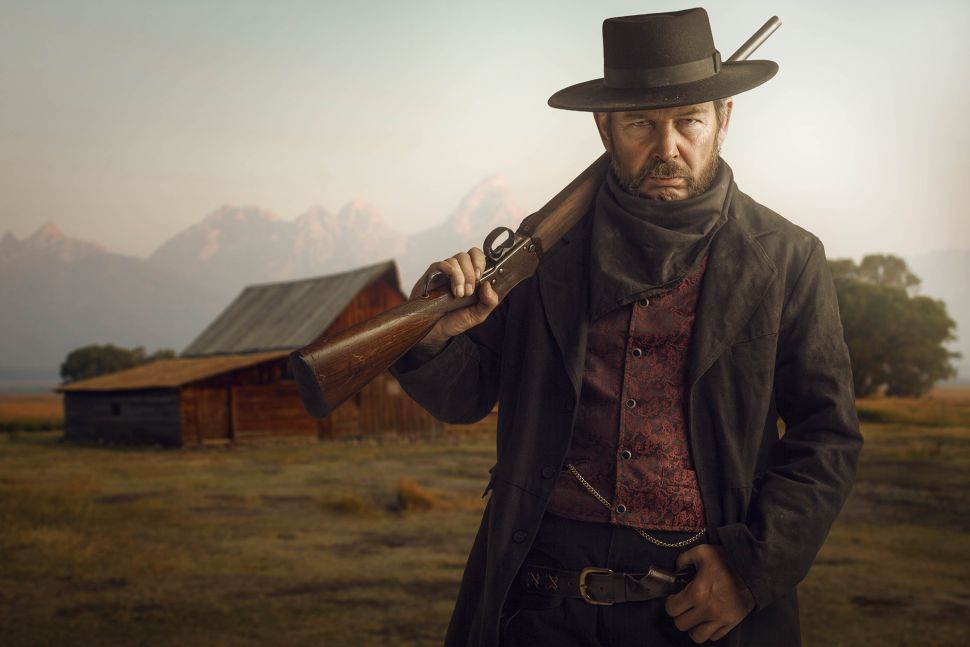Composite photography: how to shoot and Photoshop images for global clients
By Clinton Lofthouse 3 days ago
Composite artist Clinton Lofthouse explains how he conceptualizes and creates compelling images from his house
Based in Yorkshire, in the United Kingdom, I am an entertainment and advertising photographer, specializing in composite photography and creative artwork. I have worked with international clients and agencies, including Nike, Crypt TV and Athlon Outdoors.
My love of art and storytelling was the reason I bought a camera, and things escalated quite quickly from there. I believe art can change lives, so I teach Photoshop workshops around the globe, to give people the skills to change theirs.
• Read more: 100 Photoshop tips

Clinton Lofthouse on compositing in Photoshop
“Some images I use to pitch to businesses. This is one of them,” says Clinton. (Image credit: Clinton Lofthouse)
01. Hand in hand
Compositing was something I started to learn at the very beginning of my journey. I never wanted to just take a photo: I wanted to tell stories and create art. I bought Photoshop at the same time I bought my camera, so I learned both simultaneously. This allowed me to pick up composite creation and create the images I wanted.
02. Creative thinking
One of the main benefits of composite photography is that anything is possible. If you can imagine it, you can create it. The only limit is your imagination. Using stock photos enhances your freedom to create. You might not be able to get to New York to shoot a skyscraper, but you can easily find a stock image of the scene you need.
Clinton Lofthouse on compositing in Photoshop
(Image credit: Clinton Lofthouse)
03. Where to source?
I use a mixture of free and paid stock. The best free sites in my opinion are Pixabay, Unsplash and Pexels. For paid stock my go-to places are Adobe Stock or Shutterstock. I also use Neostock, which has model shots in a variety of costumes. The thing I look for in a good stock image is whether it can elevate or enhance my story. I also make sure that an image is large and high-resolution.
Clinton Lofthouse on compositing in Photoshop
(Image credit: Clinton Lofthouse)
04. Light quality
Quality of light is always important. Being a photographer means that I understand how light works more than a graphic designer, or a composite artist who doesn’t take photos. Light is one of the best ways to blend an image together and make it realistic, simply by matching direction and overlaying the light effect on the model.
05. Get busy
I think the number of elements depends on the story. Use as many as you need to get your message or vision across. Don’t worry about the number of elements: worry more about how they will work together.
You can see more of Clinton's work at www.clintonlofthousephotography.com.
Today's best Adobe Creative Cloud deals
Adobe
Creative Cloud Photography
$9.99/mth
VIEW DEAL
at Adobe
Adobe
Creative Cloud Single App
$20.99/mth
VIEW DEAL
at Adobe
Adobe
Creative Cloud All Apps
$52.99/mth
VIEW DEAL
at Adobe
This article was first published in Digital Camera magazine.
Subscribe now
Every issue of Digital Camera magazine is packed with tips, techniques, pro advice, reviews, news and inspiration. To make sure of your copy every month, subscribe at our online shop from just £12.50!
You can buy limited back issues of Digital Camera magazine in print at our MyFavouriteMagazines secure store.
Alternatively, you could choose from our range of digital options, including:
• Apple app (for iPad or iPhone)
• Zinio app (multi-platform app for desktop or smartphone)
• Google Play (for Android devices)
• Readly (digital magazine subscription service )
